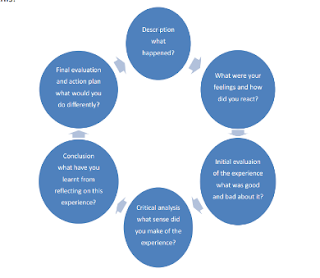Identify an ethical dilemma in your own practice linked to digital or
online access or activity.
How would you address the potential issue if it occurred in your own practice?
 As teachers, we are guided
in our practice by our code of ethics.
The overarching principle of the code of ethics is ‘teachers
certificated to practice in New Zealand are committed to the attainment of the
highest standards of professional service in the promotion of learning by those
they teach, mindful of the learner's ability, cultural background, ‘gender, age
or stage of development….’
As teachers, we are guided
in our practice by our code of ethics.
The overarching principle of the code of ethics is ‘teachers
certificated to practice in New Zealand are committed to the attainment of the
highest standards of professional service in the promotion of learning by those
they teach, mindful of the learner's ability, cultural background, ‘gender, age
or stage of development….’ Although the code of ethics is governed by four fundamental principles, the one I am drawn to is ‘responsible care to do good and minimise harm to others’ (Education Council, nd).
 When looking deeper at this
document I was drawn in by section one, titled 'Commitment to Learners'. In this section it outlines how important it
is that, as teachers, we nurture learners to ‘think and act with developing
independence’ (Teachers Council, nd), and to ‘promote the physical, emotional,
social, intellectual and spiritual wellbeing of learners’ (Teachers Council, nd).
When looking deeper at this
document I was drawn in by section one, titled 'Commitment to Learners'. In this section it outlines how important it
is that, as teachers, we nurture learners to ‘think and act with developing
independence’ (Teachers Council, nd), and to ‘promote the physical, emotional,
social, intellectual and spiritual wellbeing of learners’ (Teachers Council, nd).
These points lend themselves to a perennial dilemma for
schools; how to keep your students safe when they have digital online
access. As we are aware, the face of
education is changing and students have access to digital devices everywhere,
anywhere and at any time.
The rate new technologies are being adopted is accelerating, and these changes mean that
the concept of internet safety has changed in a short time. Internet safety has moved from protecting
people and organisations to giving people the skills, knowledge and confidence to be cybersafe. Cybersafety policies have moved from listing forbidden
behaviours to outlining a person’s responsibility and accountability.
To address this dilemma, it is important that we develop a cybersafe
learning environment by having robust policies in place to address cyberbullying.
One problem we face when trying to address cyberbullying is that students often don't tell adults they are being cyberbullied for two reasons. Firstly, they are concerned about the reaction of their peers when they find out they have spoken to an adult. Secondly, they may be concerned that their family may overreact and make the situation worse.
Therefore, we will need to make sure that all students know how to be a
responsible online digital citizen, how to be safe online and manage issues when
they arise (Social Media for Kids, 2014). The values and key competencies students need
so they can be digital citizens draws from those described in the New Zealand
curriculum document.
We also need to inform students that cyberbullying
is a covert form of bullying because it works in secret. The person who is cyberbullying them is doing
it to harm them in some way, and trying to undermine their social standing with
their peers.
From here we need to identify
with students what cyberbullying can be, but not restricted to, for:
- writing mean things about a person
- spreading rumours about a person
- ignoring a person online
- ostracising a person online
- inviting others to social events online
- developing a secret code/language and using this to talk to others online
(Australian Government, n.d.,
NetSafe, n.d.).
 Once students have identified what cyberbullying is, it then becomes
very important to teach them about how to stay safe online. This can be
achieved through a mix of formal teaching programmes, teachable moments and
modelling the correct behaviours.
Once students have identified what cyberbullying is, it then becomes
very important to teach them about how to stay safe online. This can be
achieved through a mix of formal teaching programmes, teachable moments and
modelling the correct behaviours.
Finally, students need to sign a digitrust agreement, outlining their
responsibilities as a digital citizen and what the consequences will be when
they contravene the agreement. Parents
also need to sign the agreement to show they understand what we are trying to
achieve as a school, and to support us if an issue arises which involves their
child.
Australian Government
(n.d.). Cybersafety for teachers. Retrieved from https://esafety.gov.au/esafety-information/esafety-issues/cyberbullying/cyberbullying-information-for-teachers
Education
Council. (n.d.). The Education Council
code of ethics for certificated teachers. Retrieved from
http://educationcouncil.org.nz/content/code-of-ethics-certificated-teachers-0
Netsafe (n.d.). The
netsafe kit for schools. Retrieved
from https://www.netsafe.org.nz/the-netsafe-kit-for-schools/
Social Media for Kids, (2014, Aug 15). Social media for kids®. [Video file]. Retrieved from https://www.youtube.com/watch?v=c2rOekhi20E
https://esafety.gov.au/esafety-information/esafety-issues/cyberbullying
http://educationcouncil.org.nz/content/code-of-ethics-certificated-teachers-0





















